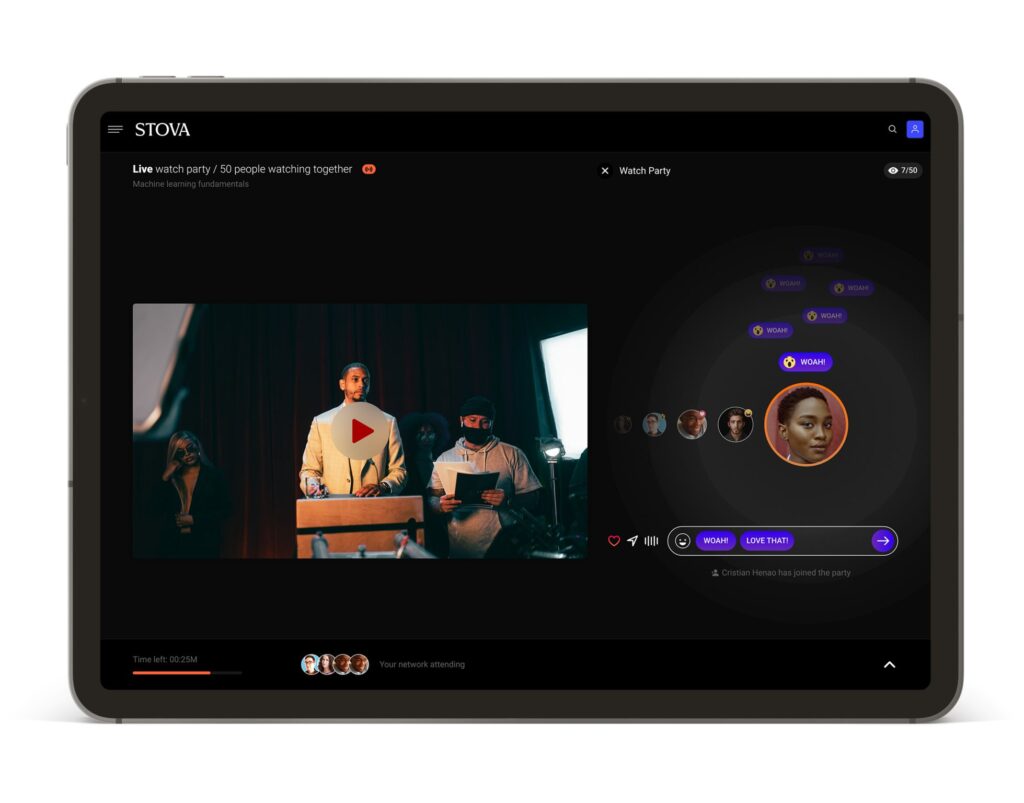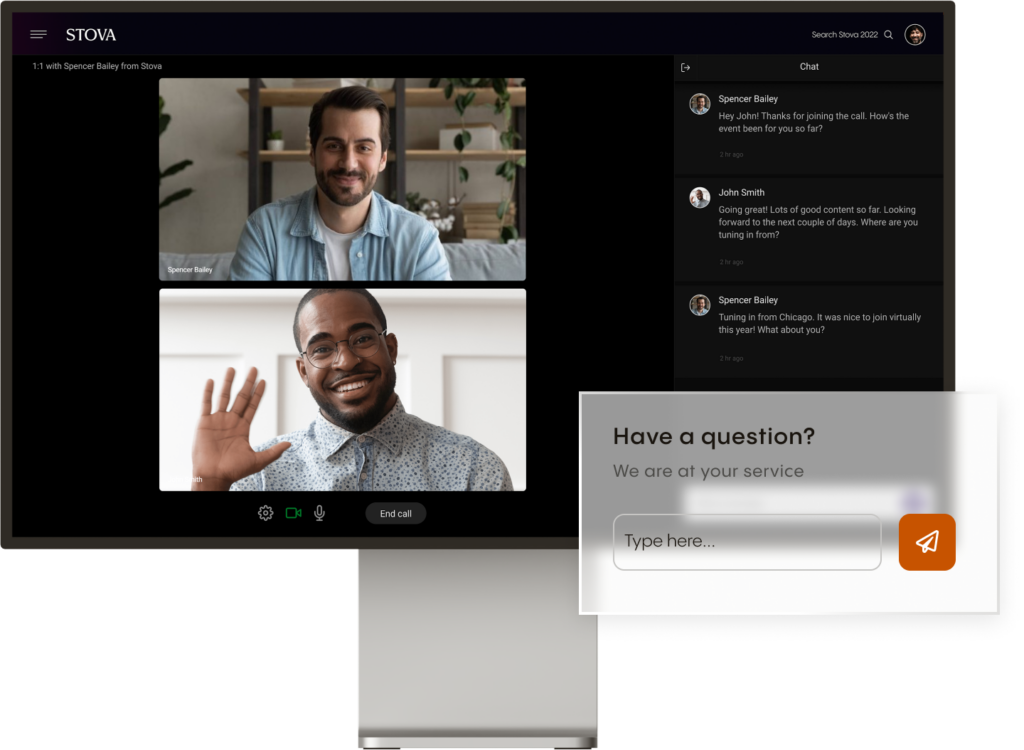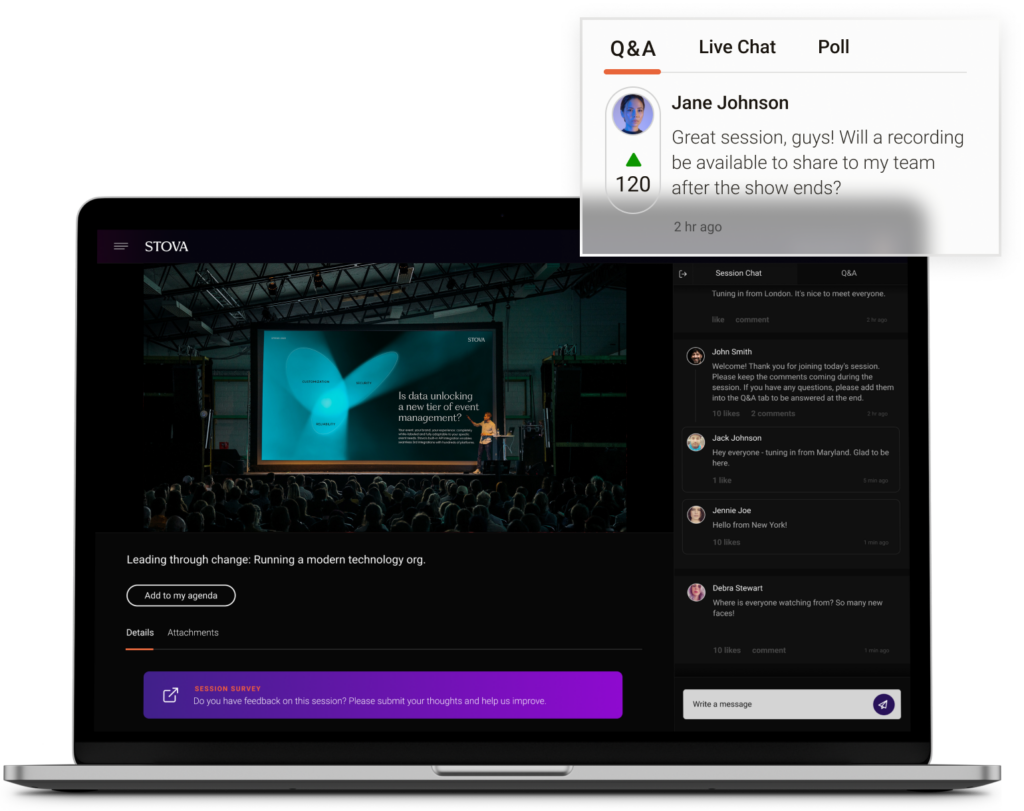Tech Connects: How to Use Event Technology to Support Networking
February 29, 2024
According to Skift research, nearly half of all events still maintain a strong virtual component, and half of those are purely virtual. Networking is what distinguishes a virtual event from a glorified webinar, and it also remains the core value of live, in-person events.
Nevertheless, the models for connecting at both virtual and in-person events have not significantly changed in years. At in-person events, event-goers continue to largely rely on happenstance “serendipitous” encounters on trade show floors and cocktail hours to facilitate networking. At virtual events, most of the activity happens within a chatbox attached to a live stream.
How can you ensure that you maximize the potential for networking throughout your event program, both virtually and onsite? And how can technology not only support networking, but create new networking modes and opportunities?

Virtual Networking
Virtual events should represent all of the networking potential of social media. They bring like-minded individuals together around interesting content that speaks to their personal and professional goals. The recipe is clear, and all the ingredients are there: interested parties, common interests, established topics or talking points. What might be causing a virtual event to fall short on delivering high-impact connections?
What it typically comes down to is a lack of education and a lack of the appropriate set up.
Some attendees may not understand the mechanisms for connection within the virtual event platform. In this case, they may be eager to flip any connections they do make onto another platform they’re more familiar with, like LinkedIn. One way to get them to network within the platform is to select one that uses chat mechanics that align with the functionality of other systems they already know and like. The key here is to pick a solution they will find intuitive.
The second hurdle is opportunity. Many attendees feel awkward about taking the first step and messaging someone within a virtual event platform. Try creating virtual spaces where attendees can congregate and engage in informal conversations. These can mimic the casual networking that happens during breaks at physical events, and can even be branded as lounges to dispel the notion that someone has to have a brilliant idea or a specific question just to start the conversation. You can also try prompting conversations with provided or suggested topics within small, curated networking groups.
The beauty of having these interactions within the platform is that the sessions can be moderated by someone from your team and potentially mined for future event content. Within a hybrid event or a virtual event leading to a larger live engagement, this can be a good way to plant seeds for connections that will develop onsite.
AI Matchmaking
Similarly, artificial intelligence (AI) can support networking by increasing the value of every connection. AI-driven matchmaking algorithms can suggest potential connections based on attendees’ profiles, interests, and objectives to improve the relevance of networking prospects.
While many laud the serendipity of the networking that happens at events, a more purposeful, intentional brand of networking can add significant value to event stakeholders. This is especially true for those who are at the event to make lucrative connections, to find project collaborators, or to learn from experts within a given field.
Using these specific interests and the information disclosed at registration and within an attendee’s profile, AI can help attendees home in on the most valuable contacts at the event in order to make sure their networking goals are realized. This can be a boon to virtual networking, but it is especially beneficial onsite where there may be many competing demands on an attendee’s time.
Artificial intelligence can even complement serendipitous networking opportunities if you use matching data to create structured networking sessions or activations to encourage people to meet their matches.
Icebreakers and Gamification
Structured networking activities can be an important way to spur attendees into action by helping them to overcome their shyness and giving them an “in.”
In-person, icebreaker events can make use of mobile technology through alerts that both invite people to participate and convey essential information about how. A mobile event app also offers data about how successful the networking event is, and how to possibly improve it in real time. For example, if you launch an alert to all attendees asking them to attend a special networking event, they may wonder how the opportunity differs from the general trade show floor where everyone has congregated already. If you send it to a select group of attendees based on a shared interest, an attended session, or some other common factor and explain that there is a networking opportunity for those interested in it, that creates an incentive to participate. If you then register a solid turnout through your mobile event data, you can consider erecting similar networking opportunities for other groups at the event.
Another way to use mobile event apps to encourage networking is through interactive games that encourage attendees to interact with each other by, for example, awarding points based on the number of contacts. This can be a significant help to those who struggle to start conversations but who nevertheless are there to make connections. The game not only incentivizes making contact in the first place, but also serves as an icebreaker by giving attendees something to talk about.
Virtual Contact Exchanges
Mobile event technology also supports onsite networking by reducing the cumbersome friction around exchanging details, making it easier to follow up after the event.
The two main challenges this addresses are convenience and engagement. Having to exchange and keep track of business cards is a dated way to facilitate follow-ups with attendees and other stakeholders. Between exhibitors and attendees, lead capturing technology is already commonplace. Exchanging contact details between attendees should be just as simple.
Moreover, allowing attendees to exchange details and maintain contact through the mobile event app itself keeps them within a platform you control and gives them more of a reason to return to it. This helps to keep your event technology “sticky” and extends its shelf life.
Interactive Attendee Listings
While it can be handy to have AI recommend connections at an event, one of the virtues of event technology is that it brings a sense of order and organization to attendee-directed networking as well.
A searchable, filterable digital directory of attendee profiles that include contact information and areas of expertise not only allows them to vet the AI’s recommendations but it can make it easier for participants to identify and connect with individuals of interest on their own.
It can also help to give more proactive attendees an opportunity to plan their networking onsite ahead of the event. Attendee listings and profiles allow for outreach and facilitate booking meetings and establishing networking intent in advance.
Video Calls and Group Meetings
Both AI matchmaking and digital directories pair well with video meeting capabilities. These have become a staple of virtual events that go beyond a one-directional content delivery system. Because every major chat and social media application facilitates video calls, they are essential for keeping people on the platform.

These can even help to bridge the gap between virtual and in-person events for a truly integrated experience. Video capabilities allow for more personal interactions that bring the experience closer to an in-person networking experience, but dismantle the barriers to access for those joining remotely.
They also provide attendees with an alternative to the cumbersome process of setting up a separate video call on Zoom, or the potentially awkward process of switching to WhatsApp or Messenger if an attendee prefers not to share their details yet.
Networking Analytics
As we alluded to a few times within this article, analytics are a critical piece of the networking puzzle. They indicate how successful networking activations are and serve as a key performance indicator for the event as a whole.

Attendee interactions within both virtual event platforms and mobile event apps can be tracked, allowing you to collect a variety of networking data points. For example, you can combine the number of connections made, messages exchanged, attendee profiles visited, or engagements within a gamified experience to establish an overall networking score. Alternatively, you can use these in isolation as performance metrics for specific networking sessions or activations. Either way, they are crucial for being able to home in on problem areas or opportunities for improvement.
However, it’s important to ask people about their experience in order to give your virtual and mobile usage data some context. Combine quantitative data from your event technology with qualitative survey or other feedback data to determine the “why” behind the patterns that you’re seeing in your analytics. This will help you to develop more actionable insights.
Conclusion
Networking is one of the principal reasons attendees come to events. To ensure that attendees and other stakeholders get the most value from the event, it is essential that they can find contacts that are relevant to their event goals and connect with them easily.
Attendees today already use a variety of social media platforms and professional networks; getting them to connect using event technology requires, at a minimum, the same experience: an intuitive platform with a feature suite that lets them connect on their own terms, whether that be through chat, video, one-on-one or in a group.
Beyond that, event technology offers added value through simple mechanisms like detailed attendee profile information that lends itself to better planning and smoother interactions, but also through more complex features like AI-assisted recommendations and tech-powered networking games.
The data it offers is also a valuable source of insights, as attendee interactions through the virtual event platform and mobile event app can be tracked. By analyzing this data, you can establish a sense of how well the event went overall, but also assess the performance of specific networking efforts. This will help you to understand what you should repeat at the next event as well as where you might make adjustments to improve the networking in future.
Ready to level up your sponsorship packages? Download our ebook Building Sponsor-Worthy Event Experiences by Maximizing Attendee Value.
Ready to learn more?
Whether your event is virtual, hybrid, or in-person, enhance your attendee’s journey with an event ecosystem built for your audience. Ready to walk through Stova's event technology solutions? Schedule some time with us today.
